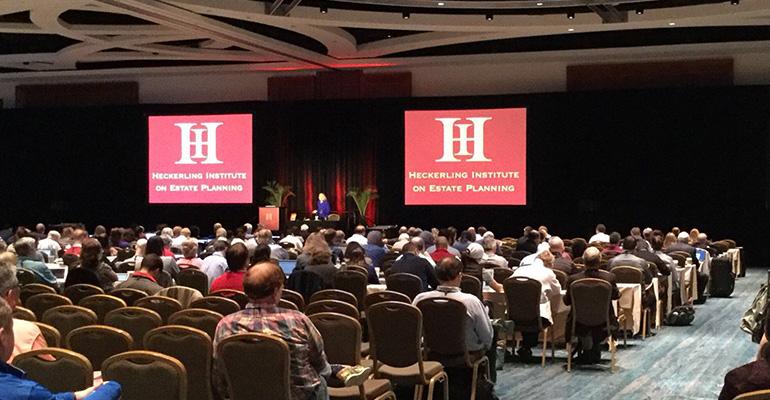At this year’s Heckerling Institute on Estate Planning, M. Read Moore covered issues relative to planning for generation-skipping transfer (GST) tax on nonexempt trusts. Moore pointed out that over the years, many Heckerling sessions have focused on how to preserve the GST tax exemption for trusts established before the effective date of the GST tax and how to ensure trusts created after 1986 remain exempt from GST tax. Moore noted that we may now want to turn more attention to strategies to anticipate, plan and deal with the payment of GST tax, as the “GST tax reckoning” for many nonexempt trusts is approaching. Many GST nonexempt trusts were already irrevocably established before estate, gift and GST tax exemptions started to rise, which means increases over the years have had no effect on already created nonexempt trusts. The looming GST tax will in large part fall on trusts as taxpayers and not individuals, and so it’s the trustees that will be responsible for anticipating the tax and paying for it.
In advising trustees on how to anticipate and deal with the tax, Moore suggested strategies for distribution planning from nonexempt trusts, planning to postpone GSTs, late allocations of GST tax exemption to reduce GST tax, valuation-related planning for taxable distributions and taxable terminations, and freeze transactions with nonexempt trust assets.
Distribution Planning
Distribution planning from nonexempt trusts might include distributions to nonskip persons to enable them to facilitate their own tax planning with distributed property, if such a distribution is permitted and in keeping with a trustee’s fiduciary duty. Caution is advised, as there are a number of state court cases as well as tax cases and rulings that touch on this issue, and it may not be entirely clear whether a trustee may make principal distributions to allow nonskip beneficiaries to make gifts or otherwise facilitate overall tax planning.
Nontaxable distributions such as qualified tuition payments and qualified medical payments pursuant to Internal Revenue Code Section 2503(e) should be considered when at all possible. Moore also suggested certain scenarios in which making a taxable distribution may be actually more advantageous. Examples might be cases in which nonexempt trust assets are expected to appreciate dramatically in value in the future or when making a taxable distribution of certain assets, such as minority interests in business or fractional interests in real estate, could result in taxable distributions at a discounted value.
Nondistributive Strategies
Moore also covered nondistributive strategies that might allow skip beneficiaries to use trust property, such as loans to skip beneficiaries or the use by skip beneficiaries of trust assets such as real estate. Given that neither Congress nor the Internal Revenue Service has defined what a “distribution” is for GST tax purposes, there’s some risk in whether loans or property use by skip beneficiaries will be characterized as such. However, given prior IRS positions on loans in the income and gift tax areas, it’s reasonable to believe that if loans are structured appropriately and with interest rates at the applicable federal rate, they won’t be characterized as distributions, assuming there’s a genuine intention of repayment. Absent a path to avoid the tax, GST tax deferral may be a next best objective, and the trustee should consider whether it has the authority under the trust instrument to add nonskip persons as beneficiaries of a trust or whether a beneficiary can add nonskip persons, such as the beneficiary’s spouse, siblings or cousins, through the exercise of a power of appointment.
Finally, given the increased GST tax amount, a trust that started with an inclusion ratio of zero may not have to stay that way. In certain circumstances, the transferor or the personal representative of the transferor’s estate may be able to allocate GST tax exemption to the trust after funding. Late allocations should be considered when possible while the GST tax exemption remains high.





